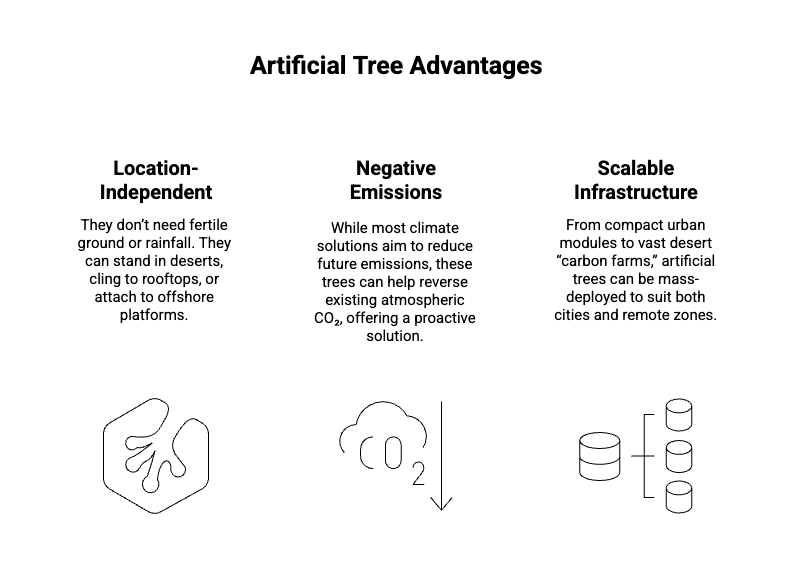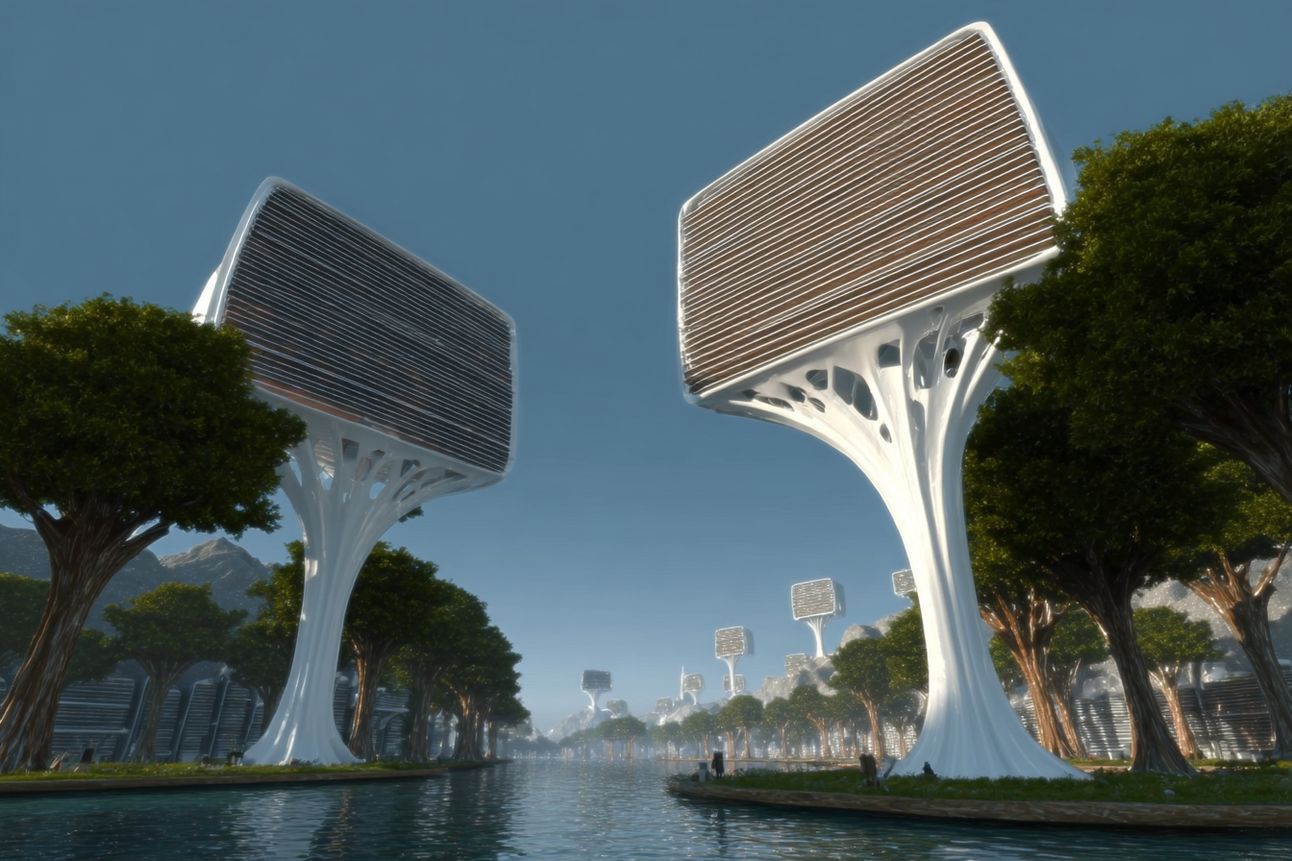When we think of trees, we picture forests—natural lungs of the planet quietly exchanging carbon dioxide for oxygen. But what if the future of breathable air doesn’t lie in forests, but in faceless, synthetic structures humming quietly atop rooftops, inside desert farms, or even anchored beneath the ocean’s surface?
This isn’t a distant dream. It’s an engineered reality—artificial trees—and they might be the most essential infrastructure in the age of urban reinvention.
What Are Artificial Trees?
Pioneered by Dr. Klaus Lackner at Columbia University, artificial trees are engineered carbon capture devices designed to remove CO₂ from the atmosphere with unprecedented speed and efficiency.
Instead of leaves, these trees use advanced sorbent materials—typically resins or plastics—that chemically bind to CO₂ in the air. And rather than relying on soil, sunlight, or water, they work passively, often triggered by humidity and requiring no external power source.
One unit can absorb up to one ton of CO₂ per day—roughly the equivalent emissions of 20 vehicles—and operates 1,000 times faster than a natural tree of the same size.
Why Are They a Game-Changer?
Artificial trees introduce a new paradigm in environmental design:
Location-Independent: They don’t need fertile ground or rainfall. They can stand in deserts, cling to rooftops, or attach to offshore platforms.
Negative Emissions: While most climate solutions aim to reduce future emissions, these trees can help reverse existing atmospheric CO₂, offering a proactive solution.
Scalable Infrastructure: From compact urban modules to vast desert “carbon farms,” artificial trees can be mass-deployed to suit both cities and remote zones.

A Tool for the Sim Eternal City—and Beyond
In the Sim Eternal City project, we imagine more than just livable neighborhoods—we imagine cities of memory, sustainability, and co-existence between life and legacy. These cities—whether floating on rising oceans, embedded in arid landscapes, or structured vertically in dense metropolises—face a common challenge: how to create clean, breathable environments without traditional land-based ecosystems.
Artificial trees meet that challenge with elegance.
In Floating Cities
No soil? No problem. Mounted to modular platforms or vessel exteriors, synthetic trees provide passive carbon filtration without interfering with marine environments or requiring freshwater.
As architecture stretches upward, facades, atriums, and terraces become prime real estate—not just for people, but for clean air. Artificial trees can be seamlessly integrated into building skins, turning high-rises into urban air purifiers.
In Desert or Underwater Zones
From Sahara to submerged domes, these trees don’t wilt under extreme conditions. They can power carbon capture networks in off-grid, arid, or submerged areas, contributing to the climate neutrality of experimental communities.
The Economics of Air
As artificial tree technology matures, cost projections are encouraging:
$30 per ton: Future estimates suggest CO₂ removal could cost as little as $30/ton—making it far more viable than many current carbon offset programs.
A New Industry: The Direct Air Capture (DAC) market is set to grow from $70 million in 2024 to nearly $700 million by 2029, signaling a coming boom in climate-tech investments.
Carbon Farming for a Post-Industrial World: Governments and innovators are exploring the concept of “carbon farms”—massive arrays of artificial trees in deserts or brownfield sites. These farms could provide jobs, clean the air, and transform dead land into planetary service zones.

Beyond Technology: A Civic Symbol
Artificial trees are not just scientific tools. In the Sim Eternal City, they could become symbols of responsibility and remembrance—monuments of life preservation as well as life celebration.
Where once statues marked political history, synthetic trees could mark climate stewardship. They remind us that survival is not just about memory, but about action.
We don’t always get to choose the world we inherit. But with synthetic trees, we are offered a chance to rebuild the air itself, faster and more efficiently than ever before. In cities yet to be born—floating above oceans, reaching into the sky, or glowing beneath the surface—these engineered structures might be the most vital form of green we have.
As Sim Eternal City continues to explore radical approaches to life, death, and urban design, artificial trees stand out not just as a solution, but as a signal: that we are willing to engineer hope where nature alone may not reach.
List of words starting with C related to this article
Carbon Capture Chronicles: The ABCs of Artificial Trees
Carbon capture technology, revolutionary in design
Cities floating above oceans or reaching to the sky
Climate stewardship marked by synthetic monuments
CO₂ removal a thousand times faster than nature
Clean, breathable environments without traditional ecosystems
Columbia University's Dr. Lackner pioneered the concept
Cost projections encouraging at $30 per ton
Carbon farms transforming dead lands into service zones
Civic symbols of responsibility and remembrance
Co-existence between life and legacy in the Sim Eternal City
This article is part of the Sim Eternal City Special Project Series.
Explore more visionary tools for urban redesign at https://www.simeternal.city.


